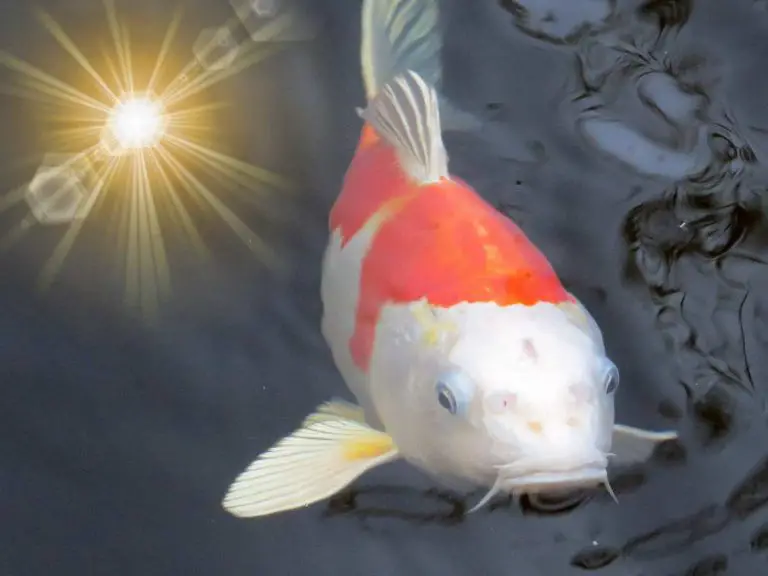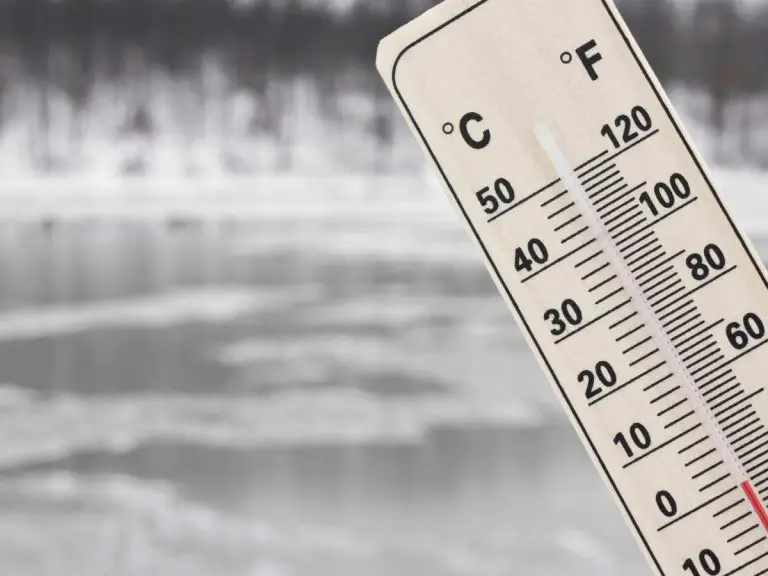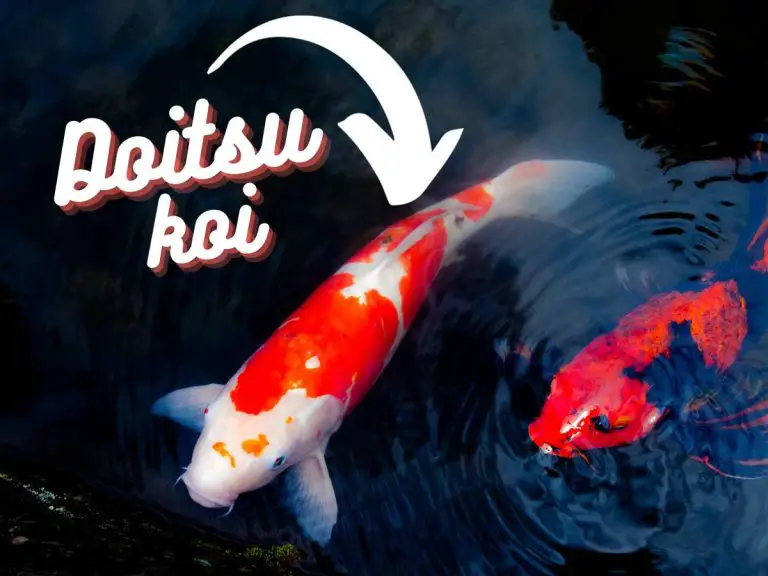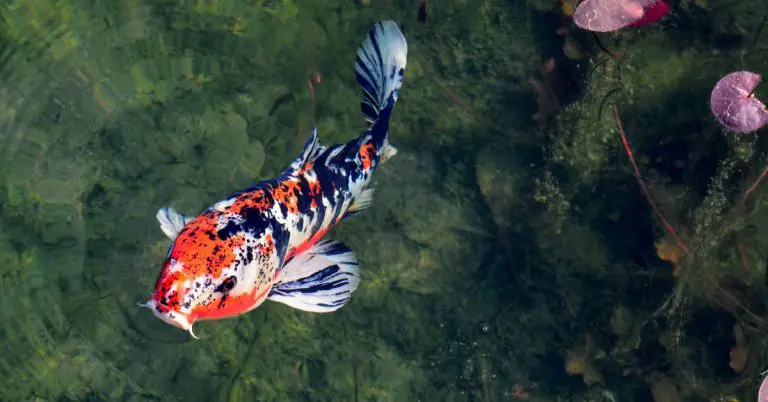Koi Sleepy Disease Guide: Symptoms, Treatment, and Prevention of Carp Edema Virus
Beneath the serene waters of your Koi pond, a potential threat lurks: the Koi Sleepy Disease. This guide is dedicated to unraveling the enigma of this condition, shedding light on its causes, symptoms, and the crucial steps for prevention and treatment.
As koi owners, understanding this disease is paramount to ensuring the health and vitality of our cherished pets.
Whether you’ve witnessed the telltale signs in your pond or are simply arming yourself with knowledge for the future, I hope this guide serves you well.
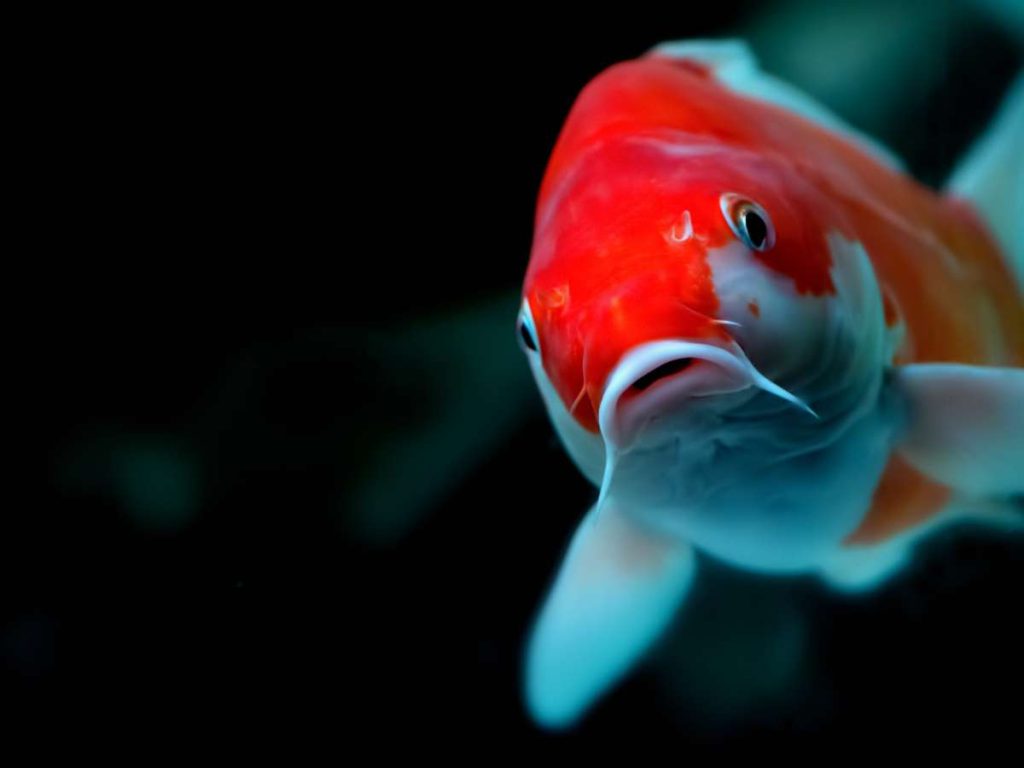
What is Koi Sleepy Disease?
Koi Sleepy Disease, scientifically known as Carp Edema Virus (CEV), is a viral infection that primarily affects koi and common carp. CEV is also a lot more common than you think. As the name suggests, one of the most noticeable symptoms is the lethargic behavior exhibited by infected fish, making them appear “sleepy.”
Affected fish often become sluggish, tend to stay near the pond’s bottom, and may show difficulty in swimming. Additionally, they can develop pale patches and swelling, particularly around the eyes, giving them a “popeye” appearance.
The disease is most prevalent in cooler temperatures, making young koi and recently imported fish especially vulnerable. If left untreated, the infection can lead to high mortality rates, especially in younger fish populations.
The virus spreads through direct contact, so introducing an infected fish to a pond can put the entire population at risk.
Why Koi Might Appear Sleepy
While it’s true that koi fish, like us, have their moments of rest and relaxation, prolonged sleepiness can sometimes be a sign of something more concerning.
Natural Sleep Patterns: Just Like Us!
First off, let’s clear up a common misconception. Koi fish do sleep, and they have their own unique sleep-wake cycles.
So, if you catch your koi fish lounging at the bottom of the pond or drifting dreamily near the surface, they might just be sleeping. It isn’t always a cause for alarm.
Remember, everyone needs rest, and koi are no exception! It’s their way of recharging and getting ready for another active day in the pond.
The Environment Plays a Role
Koi fish are incredibly in tune with their surroundings. Just as we might feel sluggish on a hot summer day or prefer to cozy up indoors during a cold spell, koi fish react to their environment.
If the water in the pond feels too chilly or too warm, your koi might slow down and appear more lethargic. It’s their way of saying, “Hey, I’m not feeling this weather!”
Also, water quality is a big deal for koi. Imagine trying to relax in a room filled with smoke or a strong odor. Not very comfortable, right?
Similarly, if the water in the pond isn’t clean or if there’s a drop in oxygen levels, your koi might feel stressed and show signs of sleepiness.
This is why it’s so essential to keep an eye on water parameters and ensure that the pond is well-aerated and filtered.
Koi Sleepy Disease: A Deeper Concern
Now, while natural sleep patterns and environmental factors can explain occasional sleepiness, there’s another reason for prolonged lethargy that koi keepers should be aware of: Koi Sleepy Disease.
This disease, caused by the Carp Edema Virus (CEV), can make koi fish appear excessively sleepy. It’s more than just a nap; it’s a health concern.
Koi Sleepy Disease doesn’t just stop at making fish appear drowsy. It can also lead to swelling, or edema, in various parts of the fish’s body.
If you notice your koi displaying these symptoms, it’s essential to act quickly. While there’s no specific cure for the disease, early detection and supportive care can make a world of difference.
Health Issues: Beyond the Sleepy Disease
Apart from the Carp Edema Virus, other health issues can also cause koi fish to appear sleepy. Various infections, parasites, or diseases can sap their energy, making them less active.
It’s like when we catch a cold or flu – all we want to do is rest and recover. Similarly, when koi fish face health challenges, they might prefer to lay low.
So, if you notice your koi fish seeming more tired than usual, it’s a good idea to observe them closely. Are there any other symptoms accompanying their lethargy?
Maybe a change in appetite or unusual spots on their body? These could be clues pointing to a specific health issue.
Identifying Edema in Koi Fish
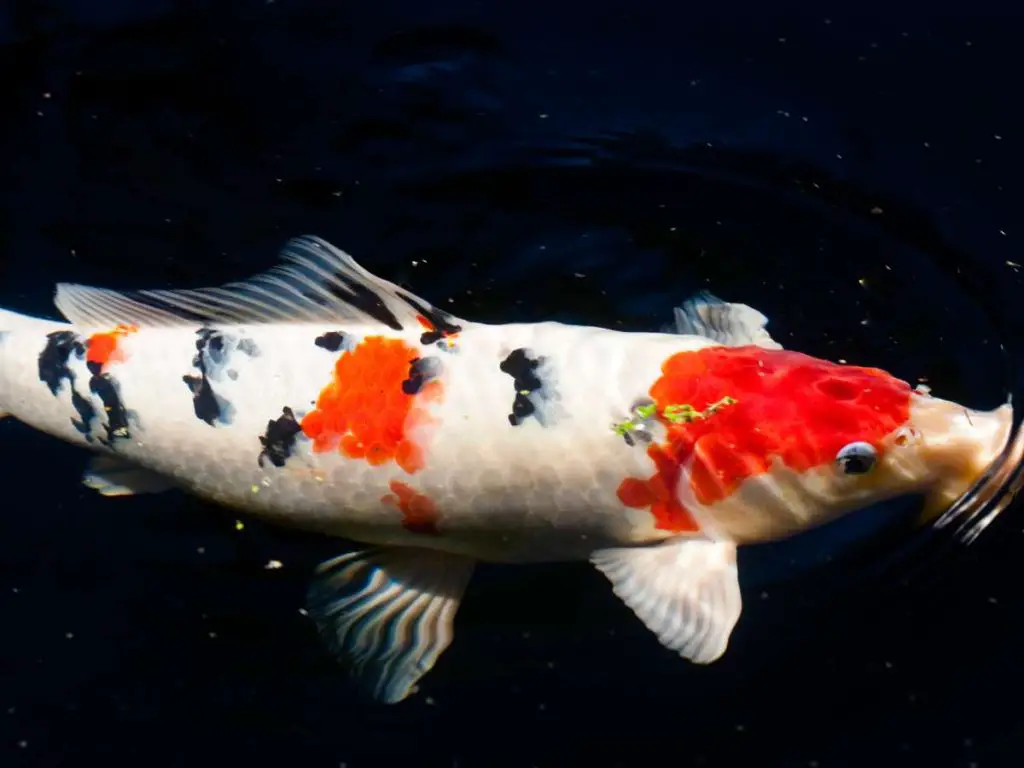
If your koi appears a bit more swollen or puffy than usual, it might be dealing with edema.
But don’t panic! Understanding edema, its signs, and potential causes can help you address the issue effectively.
What’s Edema Anyway?
In simple terms, edema is the build-up of fluid within the tissues of the fish. Think of it as your koi retaining water, leading to visible swelling in different parts of its body.
It’s like when we eat too much salty food and feel our fingers swell a bit. But for koi, edema can be a sign of underlying issues that need attention.
Spotting the Telltale Signs
So, how can you tell if your koi is experiencing edema? Here are some signs to watch out for:
- Bloated Appearance: One of the most noticeable symptoms is a bloated or swollen body. It’s as if your koi has put on some weight overnight.
- Puffy Eyes: If your koi’s eyes look like they’ve been crying or are protruding more than usual, it could be a sign of fluid retention.
- Fluid-Filled Sacs: In more severe cases, you might notice fluid-filled sacs or blisters under the skin. It’s the body’s way of trying to store the excess fluid.
If you spot any of these signs, it’s essential to act quickly. While edema itself isn’t a disease, it’s often a symptom of something more significant going on beneath the surface.
Digging Deeper: What Causes Edema?
Several factors can lead to edema in koi fish:
- Water Quality: Just as we wouldn’t feel great drinking impure water, koi can suffer from poor water conditions. High levels of toxins or imbalances in water parameters can stress the fish, leading to fluid retention.
- Nutritional Imbalances: Just like us, koi need a balanced diet. If they’re not getting the right nutrients or are overfed, it can lead to health issues, including edema.
- Organ Issues: Sometimes, the problem might be internal. Issues with the liver, heart, or other organs can cause fluid build-up in koi.
- Infections: Bacterial or viral infections can also be culprits. These infections can cause inflammation, leading to fluid retention.
Taking Action
If you suspect your koi has edema, the first step is to assess the pond’s environment. Test the water for any imbalances and make necessary adjustments. Ensure the filtration system is working efficiently and consider doing a partial water change.
Next, evaluate your koi’s diet. Are they getting the right nutrients? Are you feeding them too much or too little? Adjusting their diet can sometimes alleviate the symptoms.
However, if you’ve addressed environmental and nutritional factors and the problem persists, it’s time to consult an expert. A veterinarian specializing in aquatic animals can provide a proper diagnosis and recommend treatments.
What Are Koi Fish Viral Infections?
If you own Koi, you’ve no doubt heard about all the viruses that can make them sick. Viral infections in koi fish can be a bit of a headache, but with the right knowledge, you can tackle them head-on.
| Virus Name | Primary Targets | Key Symptoms | Severity | Notes |
|---|---|---|---|---|
| Koi Herpesvirus (KHV) | Gills, skin, internal organs | Rapid breathing, gill discoloration, lethargy, skin lesions | High | Highly contagious; can lead to significant losses in koi populations. |
| Spring Viremia of Carp (SVC) | Blood vessels | Inflammation, hemorrhaging, swollen abdomen | Moderate to High | Can cause internal bleeding and organ damage. |
| Koi Pox Virus | Skin and fins | Wart-like growths or lesions on skin and fins | Low to Moderate | More of a visual concern; generally less harmful than other viruses. |
| Infectious Spleen and Kidney Necrosis Virus (ISKNV) | Spleen and kidney | Organ damage, lethargy, potential organ failure | Moderate | Directly affects the spleen and kidney, leading to potential organ complications. |
The Unseen Enemy: Viruses in Koi Ponds
First off, what’s a fish virus? Think of it as a tiny, invisible invader that enters your koi’s body, causing all sorts of mischief. These microscopic organisms latch onto your fish’s cells, multiply, and can lead to a range of health issues. It’s like your koi’s very own version of a cold or flu, but sometimes more severe.
The Usual Suspects: Common Koi Viruses
There are a few notorious viruses that have made a name for themselves in the koi world. Let’s meet the culprits:
- Koi Herpesvirus (KHV): This one’s a biggie. KHV targets the gills, skin, and internal organs of koi. It’s fast-spreading and can lead to significant losses in koi populations. It’s like the flu during winter – it spreads quickly and can be devastating.
- Spring Viremia of Carp (SVC): This sneaky virus loves to attack the blood vessels, causing inflammation and bleeding. Picture it as a tiny vampire causing internal chaos.
- Koi Pox Virus: This virus is more of a visual nuisance. It causes wart-like growths on the skin and fins. It’s not pretty, but it’s generally less harmful than the others.
- Infectious Spleen and Kidney Necrosis Virus (ISKNV): A mouthful, right? This virus goes straight for the spleen and kidney, potentially leading to organ damage.
Spotting the Signs
So, how do you know if a virus is bothering your koi? Here are some symptoms to watch out for:
- Breathing Trouble: If your koi is gasping or its gills look discolored, it might be a sign of a viral infection.
- Behavioral Changes: Lethargy, loss of appetite, or unusual swimming patterns can be red flags.
- Visible Symptoms: Look out for growths, lesions, red patches, or a swollen abdomen.
Prevention: Your Best Weapon
The best way to deal with viruses? Stop them before they start! Here are some tips:
- Quarantine New Fish: Always isolate new arrivals for a few weeks. This gives you time to observe them for any signs of illness before introducing them to the main pond.
- Maintain Water Quality: Regularly test and adjust your pond’s water parameters. A clean environment is less inviting to viruses.
- Limit Stress: Stress can weaken your koi’s immune system, making them more susceptible to infections. Ensure they have a balanced diet, proper shelter, and a stable environment.
- Gill discoloration and respiratory problems
- Unusual behavior like lethargy or loss of appetite
- Abnormal growths or lesions on the skin or fins
- Hemorrhaging or red patches on the fish’s body
- Swollen or distended abdomen
Treating Sleepiness in Koi Fish
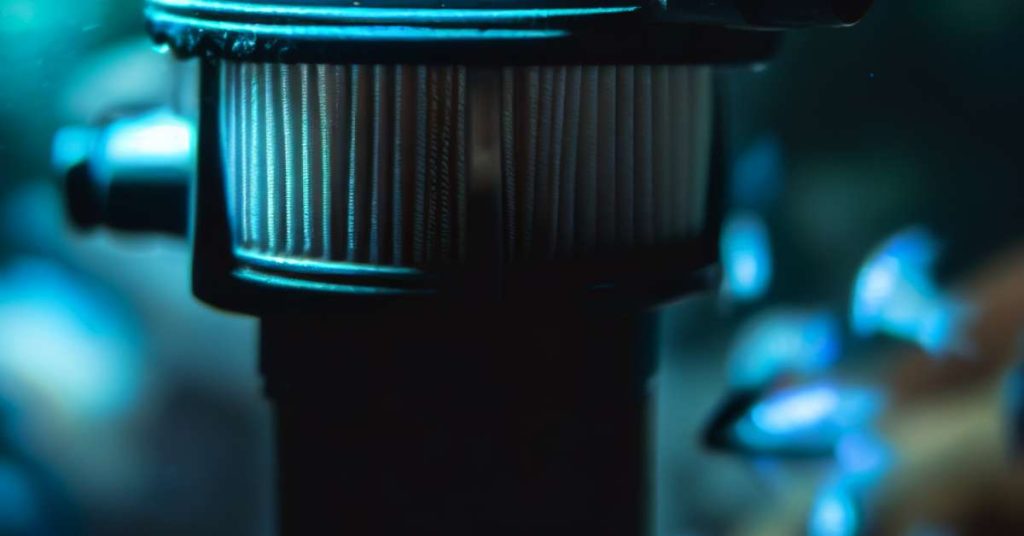
A sleepy Koi can be a sign of various underlying issues, so it’s crucial to identify the root cause. Here’s a comprehensive guide to help you ensure your koi’s vitality and well-being.
Natural Interventions:
- Dietary Considerations: Just as we thrive on a balanced diet, so do koi fish. Ensure they receive high-quality fish food enriched with essential nutrients, vitamins, and minerals. A nutritious diet boosts their energy and overall health.
- Shade and Sunlight: Koi fish can become lethargic if exposed to prolonged direct sunlight. Consider adding aquatic plants or other shading structures to your pond. This not only offers them respite from the sun but also enhances the pond’s aesthetic appeal.
- Oxygen Levels: Oxygen is the lifeblood of any aquatic environment. If your koi seem sluggish, it might be time to check the pond’s oxygen levels. Introducing an aerator or fountain can significantly enhance oxygenation, revitalizing your fish.
- Water Quality: Clean water is paramount. Regularly monitor the pH, ammonia, and nitrate levels. Maintaining optimal water conditions reduces stress on the fish, preventing lethargy. Consider investing in a reliable water testing kit.
- Social Environment: Koi are inherently social. If your pond has room, think about introducing a few more koi or compatible fish. However, always quarantine new additions to prevent potential disease spread.
Medical Interventions:
Sometimes, natural interventions might not suffice. If you’ve tried the above and your koi remain lethargic, it’s time to delve deeper.
- Consultation: Always start with expert advice. Reach out to a veterinarian specializing in aquatic animals. They can offer insights tailored to your koi’s specific situation.
- Anti-parasitic Treatment: Parasites can sap your koi’s energy. If a parasitic infection is suspected, your vet might prescribe specific anti-parasitic medications.
- Antibiotics: Use with caution! If your vet confirms a bacterial infection, they might recommend a course of antibiotics. Ensure you follow the dosage and duration guidelines to prevent antibiotic resistance.
- Water Treatments: Sometimes, the solution lies in treating the water. Based on your vet’s recommendations, you might need to introduce specific treatments to rectify water quality issues.
| Intervention | Description |
|---|---|
| Dietary Considerations | Ensure a balanced diet with quality fish food. |
| Shade and Sunlight | Provide adequate shade to protect koi from direct sunlight. |
| Oxygen Levels | Use aerators or fountains to maintain optimal oxygen levels. |
| Water Quality | Regularly test and adjust pH, ammonia, and nitrate levels. |
| Social Environment | Introduce more fish for companionship but quarantine new additions. |
| Consultation | Seek advice from a specialized veterinarian. |
| Anti-parasitic Treatment | Administer if parasitic infection is suspected. |
| Antibiotics | Use only if a bacterial infection is confirmed by a vet. |
| Water Treatments | Based on vet recommendations, treat water to address specific issues. |
So, your beloved koi fish seems a bit too sleepy lately? Don’t worry, there are plenty of ways you can help perk them up and improve their energy levels. Let’s dive into some natural remedies and changes you can make to address sleepiness in koi fish.
Managing Edema in Koi Fish
Thankfully, there are several treatment options available to help manage Edema in Koi.
Possible treatment options for edema
One effective method to treat Edema is to use salt baths, which can help draw out excess fluid from the fish’s tissues. Simply dissolve non-iodized salt in a separate container of water and then place the fish in it for about 5-10 minutes. This can be repeated 2-3 times a week until the edema improves.
Please only perform a salt bath if you’re certain you’re using the right amount of salt. Using too much salt can often do more harm than good.
Water quality management to prevent and reduce edema
Poor water quality can contribute to the development of edema in koi fish. To prevent and reduce the risk of edema, it’s crucial to maintain optimal water conditions. Firstly, make sure to regularly test the water for parameters such as pH, ammonia, nitrite, and nitrate levels. This will allow you to identify any potential issues early on.
Also, ensure that the water is properly filtered and aerated. Good filtration helps remove toxins and contaminants from the water, while proper aeration ensures there is enough oxygen available for the fish. It’s also important to conduct regular water changes to prevent the accumulation of harmful substances.
Always maintain a stable and appropriate water temperature is essential. Sudden temperature fluctuations can stress the fish and weaken their immune system, making them more susceptible to diseases like edema. Use a reliable water heater and a thermometer to keep the temperature within the recommended range for koi fish.
Preventing Viral Infections in Koi Fish
When it comes to keeping our beloved koi fish healthy and thriving, prevention is definitely better than cure. That’s why implementing biosecurity measures is crucial. Biosecurity essentially means taking steps to control and prevent the spread of infectious diseases. Sounds serious, right? Well, it is!
Imagine a fortress protecting your koi fish from harmful viruses lurking outside. That’s exactly what biosecurity measures aim to achieve. By establishing and maintaining a strong defense system, you greatly reduce the risk of viral infections wreaking havoc on your pond.
Quarantine procedures for new fish
Just like humans have to go through a quarantine period when entering a new country, koi fish should also be given the same treatment. It’s like saying, “Hold on a sec, let’s make sure you’re not carrying any unwanted guests.”
Before introducing any new fish to your pond, it’s essential to quarantine them for at least two weeks. This allows you to closely monitor their health and prevent potential diseases from spreading to the other fish.
Yes, you heard it right – koi fish can also get vaccinated! Just like us humans getting our flu shots, our finned friends can receive vaccines to protect them from specific viral infections. It’s like giving them a superhero cape to fight off those pesky disease-causing viruses.
Consult with a veterinarian or an experienced koi fish expert to determine the best vaccines for your fish. They will assess the local disease risks and recommend the appropriate vaccinations. Remember, prevention is key, so don’t skip on this important protective measure.
| Measure | Description |
|---|---|
| Quarantine new fish | Isolate new fish for at least two weeks to monitor their health and prevent disease spread. |
| Regular water testing | Conduct routine tests to ensure optimal water quality and identify any potential issues. |
| Strict hygiene practices | Practice good hygiene by disinfecting equipment and avoiding cross-contamination between ponds. |
| Biofilter maintenance | Maintain and clean your biofilter regularly to eliminate harmful pathogens from the pond. |
| Careful feeding and nutrition | Ensure proper nutrition and avoid overfeeding, as it can lead to elevated stress levels in koi fish. |
Final Thoughts
To ensure the health and well-being of your beloved koi fish, it is essential to understand the causes and symptoms of sleepiness, edema, and viral infections. By addressing these issues promptly and effectively, you can provide your fish with the care they need and deserve.
Key Takeaways:
- Sleepiness in koi fish can be caused by natural sleep patterns, environmental factors, or health issues.
- Edema in koi fish, characterized by swelling and fluid retention, can have various causes and should be properly diagnosed.
- Viral infections are common in koi fish and can lead to various symptoms, such as lethargy, loss of appetite, and skin discoloration.
- Treating sleepiness in koi fish involves natural remedies and lifestyle changes, as well as possible medical interventions.
- Managing edema requires identifying the underlying cause and implementing appropriate treatments, along with maintaining optimal water quality.
- Preventing viral infections involves practicing biosecurity measures, quarantining new fish, and considering vaccination options.
Remember, proactive care and regular monitoring are crucial for the overall health and happiness of your koi fish. By staying informed and taking appropriate action, you can enjoy a thriving pond filled with vibrant and energetic koi.
Related Questions
Can koi sleepy disease edema virus be cured?
Yes, koi sleepy disease edema virus can be treated, but it requires proper diagnosis and appropriate treatment methods. It is important to consult a veterinarian who specializes in fish health to develop a treatment plan tailored to your specific situation.
Preventing viral infections in koi fish involves implementing biosecurity measures, such as quarantine procedures for new fish, maintaining optimal water quality, and considering vaccination and immunization options. Regular monitoring and proactive care are crucial to preventing viral infections and ensuring the overall health of your koi fish.

